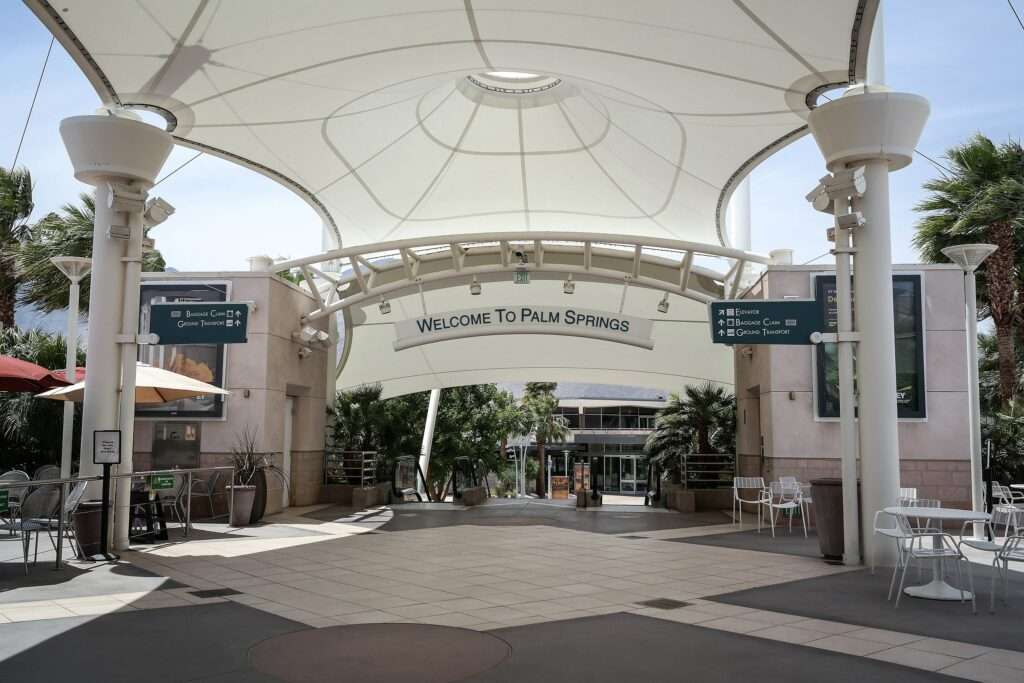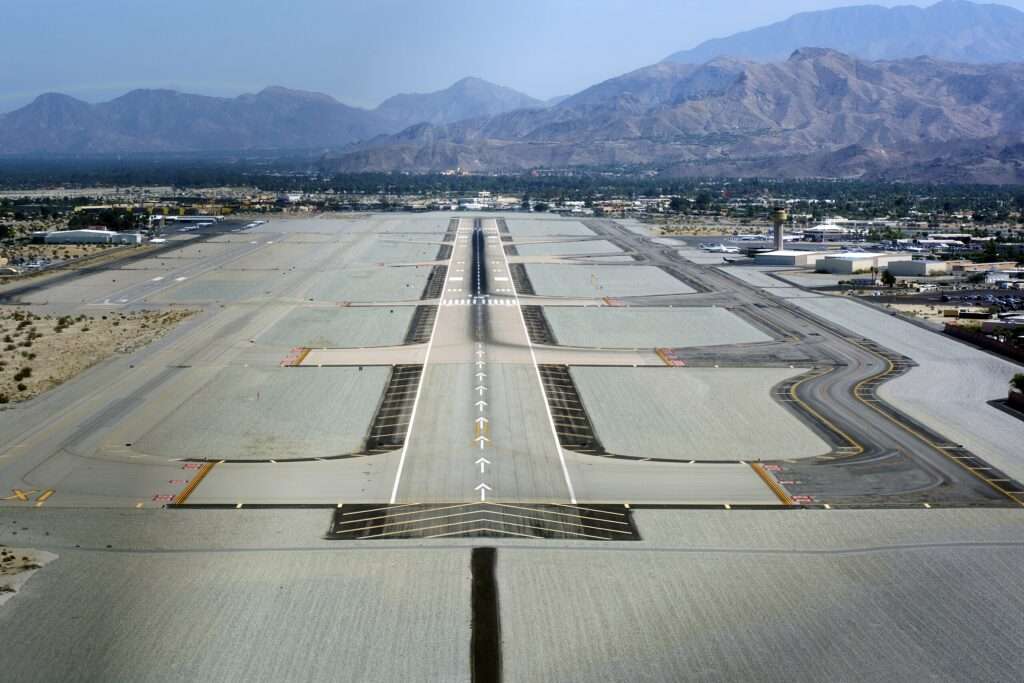Palm Springs International Airport (PSP), a beacon for tourists and a symbol of desert chic, boasts a rich history intertwined with the growth of Palm Springs itself.
Its journey began not with sleek terminals and international flights, but with a simple purpose: serving the needs of the United States military.
From Humble Beginnings: A World War II Era Landing Field
The story starts in 1928, with a single dirt runway laid out near the El Mirador Hotel (now Desert Regional Medical Center).
This rudimentary airstrip served a limited purpose, catering to a handful of aviation pioneers and military personnel.
However, with the looming threat of World War II, the need for a more substantial airfield in the region became apparent.
In 1939, the United States Army Air Corps recognized the advantages of Palm Springs’ clear skies and proximity to Los Angeles.
They secured land from the Agua Caliente Band of Cahuilla Indians and constructed a basic landing field, what would become PSP.
This initial airfield served as an emergency landing site and a staging area for the Air Corps Ferrying Command.
As the war intensified, the need for a larger and more permanent facility arose. Construction on a new airfield, christened Palm Springs Army Airfield, began in 1941.
This new airfield housed training units focused on long-distance navigation and fighter pilot instruction.
The original airfield continued to serve as a backup during this period.
Transition to Civilian Aviation: The Rise of Palm Springs
Following the war, Palm Springs Army Airfield was deactivated.
The City of Palm Springs, recognizing the potential for commercial aviation to fuel tourism in the growing desert resort town, purchased the land in 1961.
This marked the turning point for PSP.
The vision for the new airport went beyond functionality.
The city enlisted the talents of renowned architect Donald Wexler, a champion of mid-century modernism.
Wexler’s design for the main terminal, completed in 1964, became a signature feature of PSP.

The X-shaped layout, with its open spaces and floor-to-ceiling windows, embodied the desert aesthetic and offered passengers panoramic views of the surrounding mountains.
This focus on design garnered PSP a reputation as one of America’s most stress-free airports.
Commercial airline service officially began in 1964 with Bonanza Airlines offering the first flights.
As Palm Springs’ popularity as a tourist destination soared, so did the traffic at PSP.
The airport expanded to accommodate the growing demand, with airlines like American Airlines and Western Airlines establishing regular routes.
Embracing the Jet Age and Modernization Efforts
The late 1990s ushered in a new era for PSP.
The airport underwent a significant expansion, with the addition of the Sonny Bono Concourse in 1999.
This expansion not only increased the number of gates but also allowed PSP to accommodate larger jet aircraft.
Despite modernization efforts, PSP has remained true to its mid-century modern roots.
The original terminal designed by Wexler continues to serve as the heart of the airport, offering a unique blend of functionality and desert chic.
The focus on passenger experience extends beyond aesthetics. PSP boasts amenities catering to tourists, including art installations and shops featuring local products.
A Gateway to the Desert: The Future of PSP
Today, Palm Springs International Airport remains a vital artery for tourism in the Coachella Valley.
It serves over three million passengers annually, offering connections to major domestic and international destinations.
The airport continues to adapt to the evolving needs of travelers, with a focus on sustainability and technological advancements.
Looking ahead, PSP is poised for continued growth. Plans are underway to further expand the terminal and improve passenger flow.
As Palm Springs continues to attract visitors seeking sunshine, music festivals, and a taste of mid-century modern culture, PSP will undoubtedly play a key role in welcoming them to this unique desert oasis.
The story of Palm Springs International Airport is a testament to the transformative power of aviation.
From its humble beginnings as a military airfield to its current status as a modern gateway to the desert, PSP reflects the evolution of Palm Springs itself.
As the airport continues to embrace the future, it does so while preserving its unique character, ensuring that passengers continue to experience the magic of the desert the moment they step off the plane.

Click the banner to subscribe to our weekly newsleter.

Click the photo to join our WhatsApp channel so then you can stay up to date with everything going on in the aviation industry!









